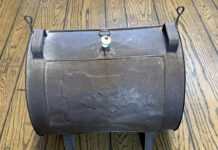Dry and spotty weather conditions so far this year have raised concerns regarding reduced yields of corn for silage and the possibility that substantial acreage of corn with little grain may have to find its way into whole plant silage.
By the time this column is printed, we may be flooding; such is the weather in Ohio.
Regardless of the weather, there is always a need for a reasonable estimate of the price of corn when used for silage.
For dairy producers growing their own silage, they can compare their cost of producing corn silage to its price, making sure that the corn silage enterprise remains profitable on their farm.
Decision
For those producers with excess corn, a decision has to be made whether to harvest the excess corn as silage or to let it mature and market the corn as grain. This requires an estimate of what the silage is worth.
Ultimately, the price paid for standing corn is determined by how much the grower wants to sell it versus how much the buyer wants to buy it. This follows the good old economic law of supply and demand.
What might help both the seller and the buyer making a coherent decision is a determination of what corn silage is worth compared to other available feedstuffs.
Corn silage is not required by dairy cows; it is only a vehicle containing nutrients required by cows. Therefore, the economic value of corn silage is based on its nutrient composition and the prices of alternative feeds.
Value
To determine an accurate value for standing corn, one needs to know its nutrient composition (energy, protein, fiber) and the costs of other feedstuffs in the local area and then use statistical methods.
The SESAME computer program that we have written at Ohio State can make these calculations. This program was used to determine the value of the corn silage for the examples used in this column. Prices used were those prevailing in central Ohio in early July.
For reference, corn grain was then priced at $3.95 per bushel, while 48 percent soybean meal was at $244 per ton. Results are dependent on these prices and those of all other commodities available in your area.
Your county Extension agent may be able to run the program for the specific market condition prevailing in your area.
Current values
Based on an average composition, “normal” corn silage is currently worth about $56 per ton when fed to cows. Standing corn must first be chopped, then ensiled and stored before it is fed.
The costs of chopping ($6 per ton), storage ($3.50 per ton), and fermentation losses (10 percent of the feed put in the silo, or $5.50 per ton) add up to about $15 per ton.
Thus, standing corn is worth approximately $56-$15 = $41 per ton for standing corn at 35 percent dry matter.
Drought-stressed corn usually has higher fiber, lower energy and slightly higher protein than normal corn silage. When we account for these expected changes, the value of drought stressed corn for silage is worth $50 per ton when fed to dairy cattle.
Subtracting the costs of chopping ($6.50 per ton), storage ($3.50 per ton), and fermentation losses ($5 per ton), we get a value of $35 per ton for standing corn at 35 percent dry matter.
Negotiation
These values can be used as starting numbers in the negotiation. Adjustments must be made based on who between the seller and the buyer will bear the risk.
A dairy producer buying corn is assuming risk (is the corn high in nitrate; will it ferment properly; what will feed prices do in the future, etc. ?).
The value assigned to these risks varies across potential buyers. In my experience, these would range between 10 percent and 20 percent of the value of the standing crop.
Thus, a price range of $28 to $33 for standing drought stressed corn (or 7.5 times the price of corn grain in dollars per bushel) and $33 to $37 per ton for normal standing corn (or 9 times the price of corn grain) would appear to be reasonable benchmarks.
Of course, sellers will try to raise the price as much as they can and buyers will try to buy the silage as cheap as they can. Such is human nature.












